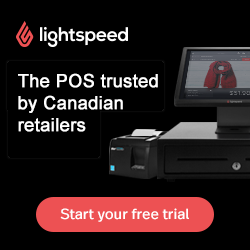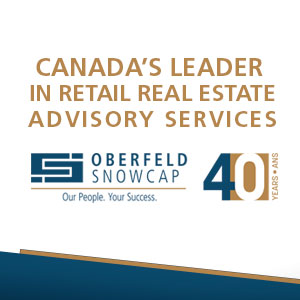The New Kid in Town: An Analysis of the Emerging Canadian Cannabis Market, Part 2
/PHOTO: CANOPY GROWTH CORPORATION VIA FACEBOOK
The following is the second in a three-part analytical series of the Canadian cannabis market by retail expert, Bruce Winder. In this section, Winder continues his discussion of the challenges facing the cannabis market.
By Bruce Winder
Supply and Demand Challenges
Continuous Supply has been spotty – in addition to initial supply chain issues out of the gate, there appears to be specific product shortages that vary by LP, by province and even by retailer. In the traditional retail world this would automatically leave customers cussing and leaving the brand to take their business elsewhere. Eventually this will get remedied as LPs learn how to grow weed in greater quantities as well as get history on the sales profile of each stock keeping unit (sku) by store, by day. Also, as LPs become more sophisticated and hire more traditional retail trained supply chain professionals, forecasting, replenishment, inventory turns, fill rates, gross margin return on inventory (GMROI) and other key metrics will improve.
LPs didn’t supply well out of the gate - whether it was the government’s inept regulatory process as stated above or poor supply chain management from the LPs the industry looked like a joke when it launched. Both sides will blame each other but both share blame in my opinion. In traditional retail one of the golden rules is to not make promises you can’t keep from a delivery standpoint. If your new widget is going to be late to market, launch it next year. Better yet utilize traditional product development processes to launch on time from the get go. Part of the problem may stem from the issue below as well.
CANNABIS PLANTS INTENDED FOR THE MEDICAL MARIJUANA MARKET ARE SHOWN AT ORGANIGRAM IN MONCTON, N.B., IN 2016. PROPONENTS OF LEGALIZATION SAY IT WILL CREATE NEW INDUSTRIES AND JOBS. THE CANADIAN PRESS/RON WARD
LPs have had trouble growing in large scale – as described in a recent article in The Globe and Mail (Nicholson, 2019) growing weed in a small contained area is a lot easier than growing it in large scale greenhouses. The growing process is extremely fragile and unless plant is managed at the correct temperature, air circulation and humidity it dies and the crop is bad or offers a lower yield. This appears to have had a hand in the supply shortages discussed above.
Unlike other consumer goods firms, LPs have not perfected the mass assembly operations needed to make cannabis in large quantities with the quality and consistency required to match illegal providers. Growing pains maybe (sorry, couldn’t resist), but still a major issue to overcome and quickly if investors and consumers are to be happy and high. The whole bagging and packaging piece is new to these folks and was underestimated from a cost, space, employee and time perspective said the CEO of HEXO on a spring earnings call.
PHOTO: CANOPY GROWTH CORPORATION VIA FACEBOOK
Distribution has been stunted in Ontario – I feel badly for the LPs, retailers and consumers in Ontario’s weed space. First, under the previous Liberal government the idea was to emulate the Liquor Control Board of Ontario (LCBO) model where government owned and operated stores. These government stores would buy pot from LPs and sell weed exclusively. They even came up with a name: OCS (Ontario Cannabis Store). Then the Conservatives took over and were going to privatize the retail side of the business. Everyone jumped for joy! Then they got spooked by the supply concerns and limited the first wave to twenty five stores through a controversial lottery system. Twenty five stores for the entire province. To add gasoline to the fire, many of the twenty five original lottery winners did not open on April 1, 2019, the provincial launch date.
As reported by The Canadian Press on May 7th, fewer than half of the 25 stores opened on the April 1st deadline. This flip flop in go-to-market strategy has led to issues such as would be pot shops with retail leases without licenses and an overall loss of industry credibility from a provincial perspective. In Saskatchewan it appears to be much easier as retailers deal directly with LPs, cutting out the middleman/middlewomen.
In fact there are four different go-to-market strategies currently being operated in Canada: 1) private licensed stores plus online: Alberta, Manitoba, Saskatchewan, Newfoundland/Labrador 2) government operated stores plus online: BC, Nova Scotia, NB, Northwest Territories, PEI, Quebec and Yukon 3) government operated online store or by phone: Nunavut and finally 4) government operated online store plus private brick and mortar stores: Ontario (Forrest, 2019). Ontario needs to join option 1) in my opinion if Canadian LPs and retailers are to drive the economics of the business and have a shot at profitability.
PHOTO: CANOPY GROWTH CORPORATION VIA FACEBOOK
Marketing & Product Challenges
Too many piglets at the trough – when one looks at the industry from a value chain perspective there are too many hands in the cookie jar for the economics to work in select provinces. If we take Ontario as an example (eventually will be Canada’s largest weed market) you have the LPs, the provincial government and retailers. With everyone taking margin along the way, retail prices become inflated for many products. This won’t work long term. My understanding is that about 75-80% of the cannabis market still resides in the illegal sphere due in part to high prices.
Having said that, as reported in The Financial Post, Statscan data shows that 13% less Canadians bought cannabis from illegal sources over the last year (Subramaniam, 2019). In addition, 47.4 % of Canadian users bought legal cannabis in the first three months of 2019, up from 23% in 2018. In my opinion, eventually the Ontario government will need to step away and regulate the industry from a distance by giving up physical ownership and distribution of product to manage the business like other provinces have done (I outline specifics later on).
The ideal value chain would be like traditional retail where you have LPs and retailers. Like traditional retail, LPs should be able to open their own online and physical brick and mortar stores (think Nike, Canada Goose, Apple and others) to drive brand experience and sell direct to consumer (DTC).
PHOTO: CANOPY GROWTH CORPORATION VIA FACEBOOK
LP’s can’t market products enough to create brand names – perhaps one of the biggest disadvantages Canadian LPs face is the inability to market brands effectively. Sure some clever folks have bent the rules a little with some institutional brand promotions but the industry for the most part feels commoditized. That is, there is limited customer recognized difference between products from LP to LP and from store to store. Folks are trying to do what they can within government limitations but so far it has had limited success in my opinion. The Financial Post reported that Canopy Growth has partnered with Canadian actor Seth Rogen to launch a new brand called Houseplant (Ligaya, 2019).
This is all and well but until Canopy can market the brand more holistically, success will be below potential. Until the government loosens up these regulations the industry will not develop and mature like other large scale consumer packaged goods companies. Think about it. If Apple and Samsung could not market heavily to differentiate their brands from low end producers they would certainly not enjoy the premium priced product positioning and premium valuations they enjoy. This is perhaps one of the most important barriers that the newly minted Canadian weed association must tackle.
hello cannabis store in dundas, on photo: jesse milns via leafly
Every Tom, Dick and Harry has entered the market and become an expert – much like the gold rush of the mid 1800’s, numerous lawyers, investment bankers, consultants, retail experts, speakers, authors, marketers and the like have suddenly become experts. Not to say that there are not real experts in the field, but I would suggest the majority are learning as they are going. This represents risk as the industry is new and most of the suits that are operating in the business and advising firms in the business don’t have history and precedent to draw from (save Colorado and other early legal states). They are literally making it up as they go along. This will be remedied over time as mistakes are made and lessons are learned but until then hang on tight and exhale slowly.
Negative headlines remind us this category can be hazardous – as I write this article, there have been two cases reported on Canadian media about overdoses on laced illegal cannabis and one case of illness due to overconsumption of illegal cannabis edibles. Both these cases reinforce the need for tight legal legislation and protection of minors. Legal weed will theoretically reduce risk to joints being laced with undesired additives but legal edibles will not help consumers if they accidentally over consume. A stark reminder that solid, specific, enforceable legislation has a place in the industry to protect consumers.
THC levels have been weaker than some users want – As reported in The Globe and Mail on April 6 (Nichoson, 2019), there have been issues in the field whereby the strength of THC (the part that gets you high) in weed has been weaker than what long time users have been accustomed to. This pushes would-be customers to illicit retailers and dealers. Leaders in the industry say that the THC issue is in part a customer education issue. Terpenes, the natural occurring oils in cannabis have a major impact to desired weed experience and one does not necessarily need high THC in order to get the desired impact.
Execution has been poor across many industry stakeholders – when you compare this industry with other mature industries you can see numerous execution issues. From poor and untimely planning to vague and incomplete regulations to poor launch to poor initial supply to poor ongoing retail in-stock, to prices that are too high to valuations that are inflated, to weed that is too weak the issues are many. The sector is like a colt, falling down often as it learns to walk. I would suggest many industry participants get a C at best for their showing. Nothing proud to write home about. Nothing mommy would put on her fridge.
Visit Retail Insider next week for the third and final instalment of Bruce Winder’s analysis of the Canadian cannabis market.
Bruce Winder is a retail expert, speaker, professor and entrepreneur. He has been interviewed dozens of times on main stream media such as BNN - Bloomberg, CBC, CTV News, CP24, Breakfast TV and more. Bruce has also been quoted hundreds of times in publications such as The Washington Post, BBC, The Globe & Mail, The Financial Post, The Toronto Star, Strategy, Adweek and many more. Bruce has 25 + years experience in big retail, manufacturing and consulting and holds an MBA from The Smith School of Business at Queen's University. He offers keynote, session and moderator services on topics such as: retail, e-commerce, online shopping, consumer trends, cannabis and Amazon.






















![L.L.Bean Continues Canadian Expansion with 1st Toronto Store [Photos]](https://images.squarespace-cdn.com/content/v1/529fc0c0e4b088b079c3fb6d/1603908990197-KDT3UNTEHFBFJF5FJ36N/L.L.Bean_Don_Mills_8.jpg)



![Retail-insider-NRIG-banner-300-x-300-V01-3[2].jpg](https://images.squarespace-cdn.com/content/v1/529fc0c0e4b088b079c3fb6d/1593476525034-QRWBY8JUPUYFUKJD2X9Z/Retail-insider-NRIG-banner-300-x-300-V01-3%5B2%5D.jpg)
![Retail-insider-NRIG-banner-300-x-300-V01-2[2].jpg](https://images.squarespace-cdn.com/content/v1/529fc0c0e4b088b079c3fb6d/1593476491497-W6OZKVGCJATXESC9EZ0O/Retail-insider-NRIG-banner-300-x-300-V01-2%5B2%5D.jpg)
![Retail-insider-NRIG-banner-300-x-300-V01-4[2].jpg](https://images.squarespace-cdn.com/content/v1/529fc0c0e4b088b079c3fb6d/1593476508900-TJG5SNQ294YNOCK6X8OW/Retail-insider-NRIG-banner-300-x-300-V01-4%5B2%5D.jpg)